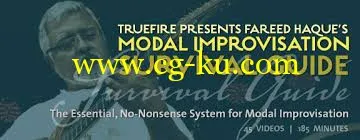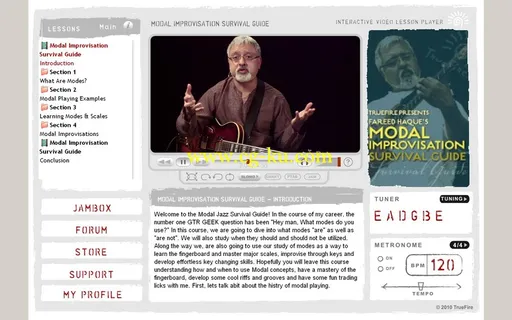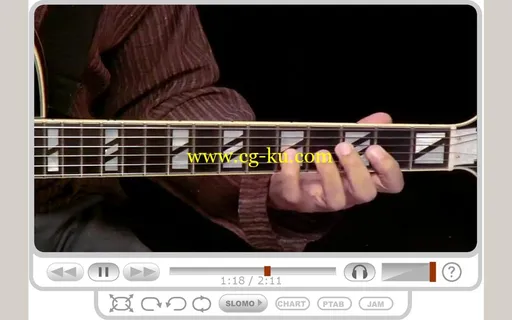
Truefire - Fareed Haque's Modal Improvisation Survival Guide (2012)
Publisher: Truefire | Language: English
Video: MP4, data-dvd (includes Tabs,Power Tabs and Jamtracks), 864x486 (16:9), 1114 Kbps, 29.970 fps | 1'45 Gb
Audio: MP3, 128 Kbps, 44100 Khz, 2 channels | Length: 03h 05min
18-year old Miles Davis told jazz pianist, composer and theorist George Russell that his musical aspiration was to "learn all the changes" and go beyond the traditional harmony of jazz at the time. That remark led Russell to ultimately develop The Lydian Chromatic Concept of Tonal Organization, a liberating theory of harmony based on jazz rather than European music. Subsequently, 33-year old Davis shattered the harmonic structure of bebop putting that theory to work in "modal jazz" recordings like Kind of Blue, one of the top-selling jazz records of all time.
Modal jazz focuses on modes rather than chord progressions as a harmonic framework. Any scale has as many modes as it has notes, thus a major scale has seven modes -- play the scale starting on any of its seven notes and you play that note's mode. Modal jazz provides a wide open landscape to improvise over, which as Art Farmer said, "opens the door to countless means of melodic expression." Ready to step through that door? Fareed Haque's Modal Improv Survival Guide is the key -- turn it and get busy!

Let's get two things straight right off the bat; don't use modes to play bebop (see the Bebop Improv Survival Guide if that's your calling); and secondly, you won't find any Greek references in Fareed's teachings. "When's the last time you saw or heard a toga-wearing ancient Greek jazz musician?"
Throughout the Modal Improv Survival Guide, Fareed demonstrates how to use the notes in each mode to build chords and melodies to create moods. "Early jazz and bebop players used a chromatic, arpeggio-based approach to build melodies, while the more modern players used modes to limit their note choices and set a mood for their improvisations."
Good news; you will grasp the concept of modal playing very quickly, especially under Fareed's tutelage. There's no complicated chord changes to solo over; often times you're improvising over simple one and two-chord vamps. Plus, if you already know the major scale, you already know all the modes. The challenge with modes is making your improvisations dynamic and interesting. Fareed's got you covered there as well.
In the first section, Fareed introduces you to the modes of the major scale and then shows you how to easily build chords and scales from those modes. You then get a little ear training experience as Fareed performs several examples to help you tune into the modal sound.
Next up, Fareed generously passes on his widely respected Fretboard Mastery System, an intuitive approach for developing your ability to move from key to key, mode to mode, effortlessly and seamlessly (this is BIG!).
In the next series of lessons, Fareed takes you through a truckload of one and two-octave modal workouts and playalongs, across a variety of keys. This is where and how you'll start developing your modal improvisation chops, developing your own fingerings, sound and fretboard awareness along the way. The perpetual motion workouts in this section further hone your skills.
In the last section, you bring it all together and improvise over a full modal arrangement, working out the modes and lines for each section of the arrangement, and then playing along with Fareed trading measures. This last series of lessons completes your modal training and qualifies you to take on any modal setting.
True to Fareed's inimitable educational approach, you will not be spending a lot of time studying theory or working through tedious exercises -- you'll play your way through the Modal Improv Survival Guide and have a blast doing it. Stay cool.
P.S. Can't get Cherokee out of your head? Check out Fareed Haque's Bebop Jazz Survival Guide!
